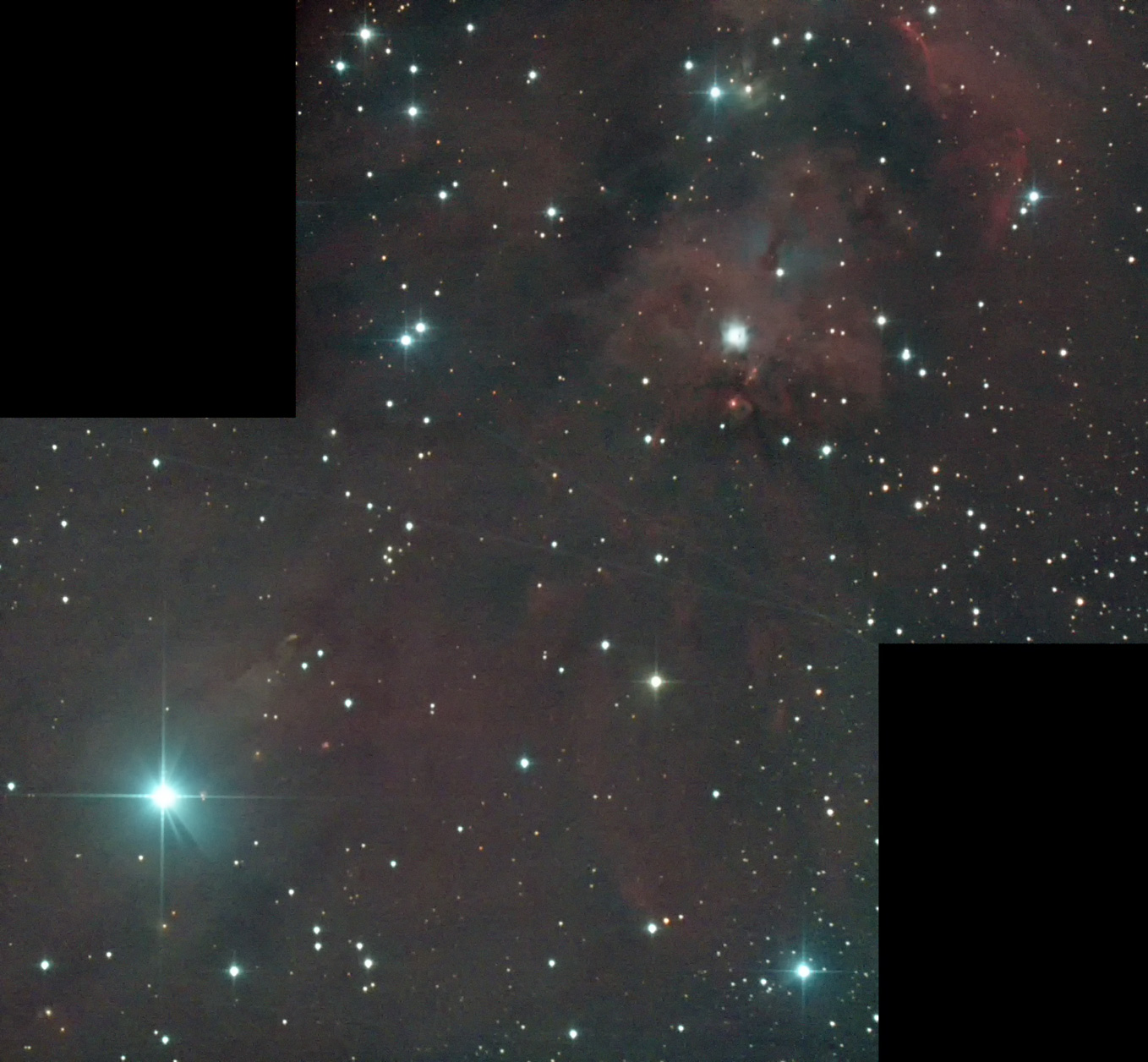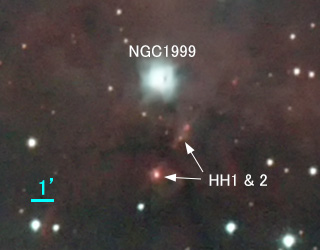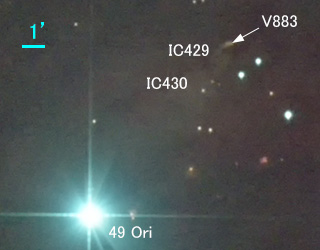
 |
| Date & Time: | Dec 9 2023, from 25:17 to 27:16 JST(+0900) |
| Mosaic of 2 flames of 10min.×6shots | |
| Optical: | VIXEN 20cm(7.9") VISAC with conversion lens (f=1278mm, F6.4) |
| with LPS-D1 Light-pollution suppression filter | |
| Auto-guided with TAKAHASHI JP Equatorial & SBIG STV | |
| CMOS Camera: | ZWO ASI2600MC Pro (Cooled temp.: -25°C) |
| Location: | Ooizumi, Hokuto city, Yamanashi pref. |
| Camera Settings: | Recording format...16bit FITS, converted to 16bit TIFF(6248×4176) |
| Device Size...23.5×15.7mm, Gain...100 |
This object looks like a compact ring because a lump of dark nebulosity is obstructing a white gas in background. A newborn star of V380 with a magnitude of 10.5 is shining in eastern region of the nebula and NGC1999 is glittering by the star. In January 2000, the Hubble Space Telescope (HST) took a splendid shot of NGC1999, the shot made this faint object popular overnight. The nebula is lying about 1500 light years away, just in the Orion Association. And there are very dimmed reddish nebulosities about 2 arc minutes south of NGC1999. The region contains a cluster of deeply embedded young stars which power oppositely directed bow shocks. These objects were first recognized by Guillermo Haro and George Herbig around 1950 and today they are known as HH 1 and HH 2. This type of active objects are known as Herbig-Haro (HH) objects, which move through the surrounding gas at speeds of up to hundreds of kilometers per second (over 100,000 miles an hour). Now several hundreds of HH objects distributed in heavens are registered in HH catalogue. The brilliant star visible approximately 50 minutes southeast of NGC 1999 is 49 Orionis with a brightness of 5th magnitude. The triangular-shaped nebula seen just to the northwest (upper right) of this star is IC 430. At the northwest tip of this nebula, the presence of a protostar known as V883 Orionis has been revealed, with an estimated age of only about 500,000 years. | |
 Magnified image around NGC1999 A pair of gaseous region just south of NGC1999 is HH1 & HH2. |
 Magnified image around IC430 V883 locates at tip of IC430 stretched NW of 49 Orionis. |
NGC1985, vdB45 |
NGC2022 |
 |
Copyright(c) 2023 by Naoyuki Kurita, All rights reserved. | ||
| To top page | To Deepsky in Winter index | Orion |